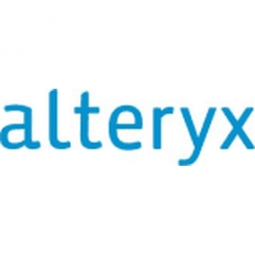Technology Category
- Platform as a Service (PaaS) - Application Development Platforms
- Sensors - Liquid Detection Sensors
Applicable Industries
- Electrical Grids
- Equipment & Machinery
Applicable Functions
- Logistics & Transportation
- Product Research & Development
Use Cases
- Last Mile Delivery
- Time Sensitive Networking
Services
- System Integration
About The Customer
The customer in this case study is a business process outsource company that provides a variety of products and services, including an End User Billing platform for insurance companies. The platform interfaces with many internal and external data sources, primarily focusing on coverage history and Cash Distribution. The system serves multiple client organizations, each with their own custom business rules, state-specific and federal rules, and variances due to implementation/on-boarding processes. The company is constantly challenged with discrepancies in the billing system due to the complexity of data sources, business rules, and manual interventions.
The Challenge
The case study revolves around a business process outsource company that provides an End User Billing platform for insurance companies. The platform interfaces with numerous internal and external data sources, primarily focusing on coverage history and Cash Distribution. The system serves multiple client organizations, each with their own custom business rules, state-specific and federal rules, and variances due to implementation/on-boarding processes. The complexity of data sources, business rules, and manual interventions often leads to discrepancies. The rapid change in data sources and rules/regulations from state and federal regulators further increases risk in new development/enhancements in software. The Billing system generates billing from coverage history, i.e., the record of what coverage you have and the rates and other attributes. Issues arise in the regular updating of coverage history due to late arriving rate changes and other things that affect the elements that drive billing. Further adjustments after the initial bill can be done in error or done incorrectly. Billing operations is regularly challenged to react to discrepancies that are found between coverage history and Cash distribution data.
The Solution
The company developed the 'Billing Automated Reconciliation Tool' (BART) using Alteryx and collaborating with Billing SMEs for requirements and clarifications. The solution was built in a couple of months working part-time with one resource. The solution has been refined in iterative development sprints and now provides regular and on-demand reporting that identifies nearly a hundred issues comprised of specific conditions and rules for each, and provides recommendation for corrective actions. Some issues are packaged and fed into an interface for automated correction while others are used to expedite the manual process to verify and approve actions. The solution extracts data primarily from IDAA appliance using SQL. It blends data from the cash/billing tables and the coverage history tables, then cleanses and blends the data from both streams and then joins and reconciles the streams and produces reporting from a detail bill period level to high level summaries. The solution was designed to be configurable by client and run instance. An .xlsx was designed to provide a means for Billing Ops to enter/modify what client they want to report on, what edits they wanted to exercise, time frames, and other considerations.
Operational Impact
Quantitative Benefit

Case Study missing?
Start adding your own!
Register with your work email and create a new case study profile for your business.
Related Case Studies.

Case Study
Smart Water Filtration Systems
Before working with Ayla Networks, Ozner was already using cloud connectivity to identify and solve water-filtration system malfunctions as well as to monitor filter cartridges for replacements.But, in June 2015, Ozner executives talked with Ayla about how the company might further improve its water systems with IoT technology. They liked what they heard from Ayla, but the executives needed to be sure that Ayla’s Agile IoT Platform provided the security and reliability Ozner required.

Case Study
IoT enabled Fleet Management with MindSphere
In view of growing competition, Gämmerler had a strong need to remain competitive via process optimization, reliability and gentle handling of printed products, even at highest press speeds. In addition, a digitalization initiative also included developing a key differentiation via data-driven services offers.

Case Study
Predictive Maintenance for Industrial Chillers
For global leaders in the industrial chiller manufacturing, reliability of the entire production process is of the utmost importance. Chillers are refrigeration systems that produce ice water to provide cooling for a process or industrial application. One of those leaders sought a way to respond to asset performance issues, even before they occur. The intelligence to guarantee maximum reliability of cooling devices is embedded (pre-alarming). A pre-alarming phase means that the cooling device still works, but symptoms may appear, telling manufacturers that a failure is likely to occur in the near future. Chillers who are not internet connected at that moment, provide little insight in this pre-alarming phase.

Case Study
Premium Appliance Producer Innovates with Internet of Everything
Sub-Zero faced the largest product launch in the company’s history:It wanted to launch 60 new products as scheduled while simultaneously opening a new “greenfield” production facility, yet still adhering to stringent quality requirements and manage issues from new supply-chain partners. A the same time, it wanted to increase staff productivity time and collaboration while reducing travel and costs.

Case Study
Integration of PLC with IoT for Bosch Rexroth
The application arises from the need to monitor and anticipate the problems of one or more machines managed by a PLC. These problems, often resulting from the accumulation over time of small discrepancies, require, when they occur, ex post technical operations maintenance.

Case Study
Data Gathering Solution for Joy Global
Joy Global's existing business processes required customers to work through an unstable legacy system to collect mass volumes of data. With inadequate processes and tools, field level analytics were not sufficient to properly inform business decisions.







